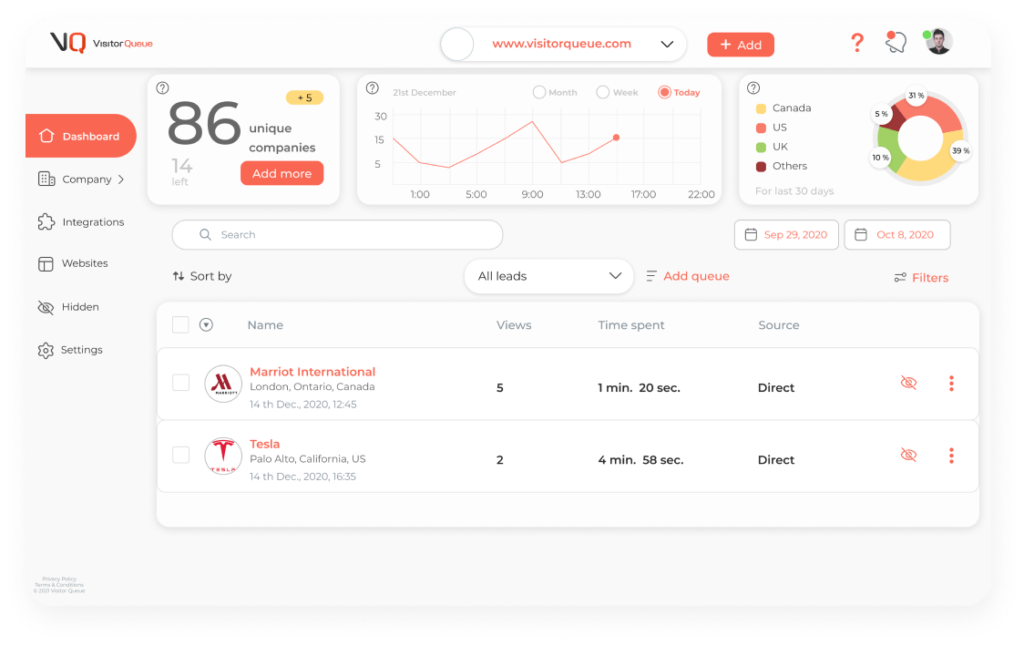When marketing and sales teams aren’t on the same page, great opportunities slip through the cracks. Marketing may generate leads that sales can’t close, or sales might push for goals that marketing hasn’t prioritized. The result? Frustration, inefficiency, and missed revenue.
But when the two teams work together, the entire customer journey becomes smoother. Leads are better qualified, handoffs are seamless, and conversions increase. In this article we are going to go through a variety of strategies to better align your sales and marketing teams.
Why Alignment Between Sales and Marketing Matters
Sales and marketing alignment goes beyond teamwork, it directly impacts your bottom line. When these departments operate separately, the customer experience becomes disjointed. Prospects may receive mixed messages, follow-ups may lag, and potential sales can be lost.
On the other hand, aligned teams share data, goals, and insights. Marketing attracts the right leads, and sales turns those leads into loyal customers. The entire funnel becomes more predictable, efficient, and profitable. Alignment also builds stronger internal relationships. When marketing understands sales challenges and sales appreciates marketing’s strategy, collaboration feels natural instead of forced. That shared understanding drives growth and creates a culture of accountability.
Start With Shared Goals and Definitions
The first step toward alignment is agreeing on shared objectives. Sales and marketing should work toward the same targets rather than focusing on separate metrics. For example, both teams can aim to increase the conversion rate from marketing-qualified leads (MQLs) to sales-qualified leads (SQLs) instead of working in silos.
This requires open discussions about how success is measured. Define what an MQL looks like, what actions move a prospect to SQL status, and what metrics reflect real progress. These definitions should be written down and visible to both teams, ideally inside your CRM. When your teams share a common goal, they stop operating as separate entities and start functioning as one.
Make the CRM a Shared Space
A CRM should be the single source of truth for both teams. Unfortunately, it’s often used as a sales-only tool, leaving marketing out of the loop. That’s a missed opportunity. Marketing should have full visibility into how leads progress after handoff. In return, sales should be able to see which campaigns and content influenced those leads in the first place. This creates transparency and helps both sides make better decisions. Automation can simplify this process. Set up workflows that assign leads to the right rep as soon as they meet qualification criteria.
Sales updates should also flow back to marketing. If a lead wasn’t ready to buy, that information helps marketing adjust targeting and messaging. Over time, these shared insights lead to higher-quality leads and better conversions.
Identify Missed Opportunities
Most website visitors never fill out a form or contact your team directly. In fact, up to 98% of visitors leave without identifying themselves. That’s where Visitor Queue comes in. Visitor Queue identifies the companies visiting your website, showing firmographic and behavioral data like industry, company size, and the specific pages they viewed. This turns anonymous traffic into real opportunities that marketing and sales can act on together.
Marketing can use this data to score leads based on intent. For example, if a company spends time on your pricing or demo page, that indicates stronger buying interest than someone browsing your homepage. Marketing can then prioritize those visitors for immediate outreach or sales handoff.
On the other hand, sales can see what the visitor viewed and tailor their approach accordingly. Instead of a generic email, a rep might say, “I saw you were exploring our pricing options, can I answer any questions?” That level of personalization builds credibility and increases response rates. Try Visitor Queue for free today and stop losing leads.

Collaborate on Content
One of the easiest ways to align sales and marketing is through content collaboration. Too often, marketing creates materials that sales never uses, or sales writes ad-hoc messages that don’t match the brand voice. To fix this, include sales in your content planning sessions. Ask what questions prospects frequently ask and what objections they raise. Marketing can then create blogs, case studies, and videos that directly address those topics.
This collaboration ensures every piece of content serves a purpose. For example, if sales struggles to explain a complex product feature, marketing can develop a visual guide or short explainer video. When both teams contribute to content creation, it becomes more practical, persuasive, and relevant.
Keep Feedback Loops Consistent
Weekly or biweekly check-ins are ideal. Use these meetings to review key metrics such as lead quality, conversion rates, and campaign performance. If certain leads are consistently stalling, discuss why. Maybe the messaging doesn’t resonate, or perhaps the follow-up timing needs adjustment. Sales feedback is especially valuable for improving marketing strategy. If sales finds that leads from a particular campaign aren’t ready to buy, marketing can refine the audience or nurture flow. In turn, marketing can share insights from analytics that help sales prioritize prospects more effectively.

Encourage Joint Planning and Reporting
To achieve long-term alignment, sales and marketing must plan together, not separately. Campaign planning, lead scoring, and reporting should involve input from both sides. Joint planning helps marketing understand sales priorities for the upcoming quarter. It also allows sales to prepare for the influx of leads from specific campaigns. When both teams anticipate each other’s needs, workflows become smoother and conversion rates increase. Use dashboards that both departments can access to monitor performance in real time. This visibility encourages ownership, when everyone can see progress, it’s easier to stay motivated and accountable.
Develop Shared Messaging and Brand Voice
Consistency is key in converting leads into customers. If marketing promotes one message but sales communicates another, prospects can quickly become confused or lose trust. To prevent this, both teams should collaborate on a unified brand voice. This doesn’t mean every word must be identical, but the tone, key benefits, and value propositions should stay consistent. Whether a lead reads a blog post, attends a webinar, or receives a sales email, they should experience the same clear story.
Celebrate Wins Together
Alignment isn’t just about strategy, it’s also about culture. When teams work toward the same goals, they should celebrate success together. When marketing’s campaigns generate qualified leads that sales converts, recognize the effort on both sides. Likewise, when sales provides feedback that helps marketing refine targeting or improve messaging, highlight that collaboration. These shared victories build trust and remind everyone that they’re part of the same mission. Over time, this positive culture becomes a natural driver of alignment and performance.

Maintain Alignment With Revenue Operations
As your organization grows, alignment becomes harder to maintain. That’s where a revenue operations, or RevOps, approach can help. RevOps brings marketing, sales, and customer success under a unified strategy focused on revenue generation and retention. By creating shared processes, data standards, and reporting systems, RevOps keeps everyone working toward the same financial goals. It ensures that alignment doesn’t rely on individual relationships but becomes part of the company’s structure. Even if you don’t have a formal RevOps team, adopting this mindset, treating marketing and sales as equal parts of one revenue engine, can keep alignment strong as your business scales.
What’s Next?
When sales and marketing work as one, conversion rates climb, lead quality improves, and your customer relationships strengthen. But alignment doesn’t happen overnight. It takes regular communication, mutual respect, and a commitment to shared outcomes. If you have any questions about using Visitor Queue to identify your website visitors, do not hesitate to reach out.
 Identify
Identify Personalize
Personalize Benchmark
Benchmark Agencies
Agencies Integrations
Integrations Case Studies
Case Studies Use Cases
Use Cases Blog
Blog Resources
Resources









